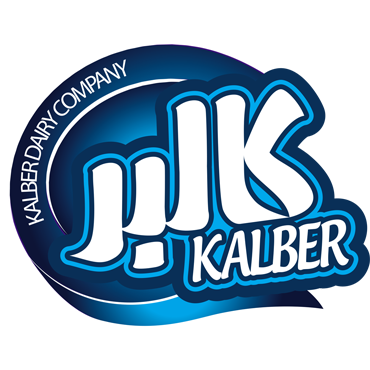All About Shelf-Stable Dairy Product Varieties: Smart Nutrition for a Sustainable Future
Shelf-stable milk and dairy products provide long-lasting freshness without refrigeration, offering convenience for consumers and industries alike. From UHT milk to powdered creamers, these innovations ensure essential nutrition while supporting sustainable dairy practices.
Shelf-stable dairy—milk and dairy products that can sit on a shelf without refrigeration until opened—has moved from niche pantry-staple status to mainstream relevance. For manufacturers, exporters, retailers, and health-conscious consumers alike, these products offer major advantages: long shelf life, lower cold-chain costs, disaster resilience, and broader market reach. This guide explains the common forms of shelf-stable dairy, how they’re made, their nutrition and safety profile, innovations and sustainability considerations, plus practical tips for producers and consumers.
What “Shelf-Stable Dairy” Actually Means
Shelf-stable dairy includes any dairy product processed and packaged so it can be stored at ambient temperatures until the package is opened.
Common Commercial Forms
-
UHT (Ultra-High Temperature) milk / aseptic packaged milk
-
Powdered (dry) milk — skimmed, whole, or specialty powders
-
Evaporated milk and condensed (sweetened) milk
-
Shelf-stable creamers
-
UHT cream
-
Anhydrous milk fat (AMF)
-
Powdered creamers
-
Ambient (shelf-stable) yogurts using aseptic filling or special formulations
UHT Milk (Ultra-High Temperature Milk)
UHT milk is heated to 135–150 °C for a few seconds and aseptically packaged. This destroys harmful microorganisms, allowing the milk to stay safe at room temperature for six to nine months until opened.
Nutrition and Quality
It retains most protein, fat, calcium, and vitamins, with only minor losses in heat-sensitive nutrients. Its long shelf life and portability make it ideal for areas with limited refrigeration or for export markets.
Uses
UHT milk is commonly used in retail, travel, and institutional settings. Once opened, it should be refrigerated.
Evaporated Milk
Evaporated milk is a type of cow’s milk that has about 60% of its water removed through gentle heating. This process gives it a thicker texture, a slightly caramelized flavor, and a longer shelf life without the need for preservatives.
Nutrition and Uses
It provides higher levels of protein, fat, and minerals per unit. It’s popular in cooking, baking, sauces, and beverages, especially where fresh milk supply is inconsistent.
Condensed Milk (Sweetened Condensed Milk)
Condensed milk is concentrated and sweetened, which preserves it without refrigeration.
Nutrition and Uses
It is energy-dense and rich in sugars, proteins, and fats. It’s widely used in desserts, confectionery, traditional sweets, and sweet beverages.
Milk Powder
Milk powder is made by removing nearly all water from milk through spray-drying or roller-drying. Its low moisture content prevents spoilage.
Nutritional Profile
Powders retain proteins, calcium, fats, and most vitamins, though heat-sensitive vitamins may be slightly reduced. Fortification is common.
Types and Applications
Common types include whole, skimmed, fat-filled, and instant powders. They are used in infant formula, baked goods, beverages, and food manufacturing due to their long shelf life and transport efficiency.
Anhydrous Milk Fat (AMF)
AMF is concentrated milk fat with almost no water or non-fat solids, giving it exceptional shelf stability.
Uses and Benefits
It’s used in chocolate, bakery products, and dairy blends, providing rich flavor and high energy content. Proper storage is required to prevent oxidation.
Shelf-Stable Creamers
These are emulsified dairy products processed aseptically for long-term storage without refrigeration.
Uses
They are added to coffee, tea, and ready-to-drink beverages, with single-serve packaging for convenience in foodservice, hotels, and airlines.
Powdered Creamers
Powdered creamers are dry blends of dairy or non-dairy fats and stabilizers, making them stable for long-term storage.
Uses
They are used in coffee, tea, bakery, dairy, and instant food products to add creaminess, improve texture, and enhance flavor. Non-dairy versions may lack the full nutritional value of milk fat.
UHT Cream
UHT cream is dairy or non-dairy cream sterilized by heating to ultra-high temperatures (typically 135–150°C for a few seconds) to destroy microorganisms and ensure long shelf life. It maintains a rich, smooth texture and fresh flavor while being stable for ambient storage before opening.
Uses
UHT cream is commonly used as a breakfast cream, in desserts, sauces, soups, bakery fillings, and various culinary applications. It provides a creamy texture, smooth mouthfeel, and enhances flavor in both sweet and savory dishes.
Shelf-Stable Yogurt
Ambient yogurt is heat-treated after fermentation and aseptically packaged to remain safe without refrigeration.
Uses
It is increasingly popular in ready-to-drink formats and school nutrition programs. Heat-tolerant probiotic strains or stabilizers maintain taste and texture.
Challenges
Formulation must balance flavor, texture, and microbial safety to remain appealing over months.

How Shelf Stability is Achieved — The Processing Basics
Microbial Inactivation + Sterile Packaging
Shelf-stable dairy products owe their long life to a combination of heat treatment and sterile packaging. Through UHT (Ultra-High Temperature) processing and aseptic packaging, spoilage organisms are completely destroyed, allowing milk and similar products to remain safe and fresh for months at room temperature without refrigeration.
Water Removal (Drying / Concentration)
Another effective method is reducing water content through drying or concentration. Products such as milk powders achieve stability by limiting microbial growth.
Emerging Technologies
Modern innovations like microencapsulation and recombined milk techniques are transforming the shelf-stable dairy sector. These technologies help protect heat-sensitive nutrients and probiotics, ensuring that nutritional quality is maintained even after intensive processing.
Nutritional Profile — Is Shelf-Stable Dairy “As Good” As Fresh Dairy?
When it comes to nutrition, shelf-stable dairy performs remarkably well. Core nutrients such as proteins, fats, and carbohydrates remain largely unaffected by processing. Essential minerals like calcium also stay stable.
Fat-soluble vitamins (A, D, E, and K) are well preserved, while some water-soluble vitamins (like vitamin C and certain B vitamins) may experience slight degradation — a loss that manufacturers often compensate for through fortification.
Overall, shelf-stable dairy remains a highly valuable nutritional option, especially in regions where maintaining a cold chain is difficult or unreliable.
Food Safety and Storage — Best Practices
To ensure quality and safety, unopened shelf-stable dairy products should be stored in a cool, dry place away from direct sunlight. Once opened, they should be refrigerated and consumed within the recommended timeframe. For powdered products, controlling temperature and humidity is essential to prevent caking or unwanted flavor changes.
Market Trends & Innovation
The market for shelf-stable dairy continues to expand with exciting innovations. Ambient, probiotic-rich drinking yogurts are becoming increasingly popular. Functional fortifications — including added protein, vitamins, and omega-3 fatty acids — enhance both health value and consumer appeal.
Modern packaging solutions have also enabled portion-sized and single-serve formats, providing convenience for on-the-go consumers and improving product accessibility.
Practical Applications
Shelf-stable dairy benefits various sectors:
- Humanitarian and institutional programs: Ideal for school meals, disaster relief.
- Export markets: Efficient transport and storage.
- Consumers: Convenient options for busy lifestyles.
Tips for Producers and Brands (B2B)
Producers should select the right product format for their target markets and plan a strong nutrition and fortification strategy. Maintaining aseptic processing standards is key to ensuring safety and quality. Flavor profiles may also need adjustment to manage the characteristic taste notes associated with UHT processing. Finally, proper storage and logistics are crucial to preserving product integrity throughout the supply chain.
Tips for Consumers
Consumers can get the most out of shelf-stable dairy by following a few simple steps: always check best-before dates, store products properly, and refrigerate them after opening. When using milk powders, it’s important to follow the reconstitution instructions carefully for optimal taste and nutrition.
Sustainability and Supply Chain Advantages
Shelf-stable dairy reduces refrigeration needs, lowering energy use and emissions. Powdered milk enables efficient transport, while advances in recyclable aseptic packaging improve environmental performance.
Conclusion
Shelf-stable dairy combines practicality, nutrition, and innovation. From UHT milk and milk powder to AMF, creamers, and ambient yogurt, these products support long storage, reduce food waste, and deliver essential nutrients worldwide. They are a reliable, efficient, and environmentally conscious solution for modern consumers and markets.





.jpg)